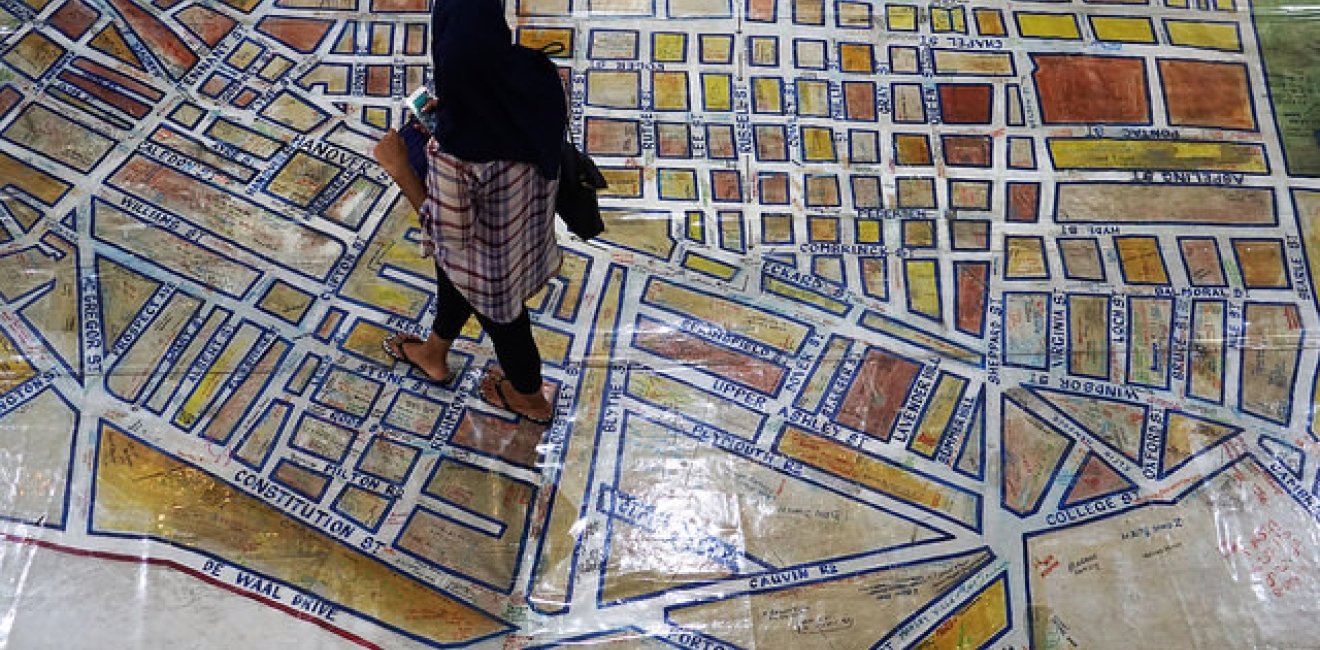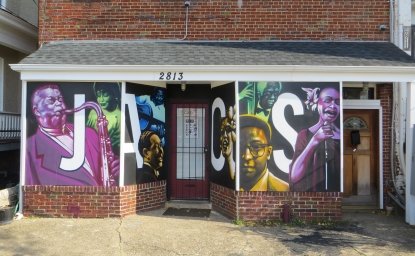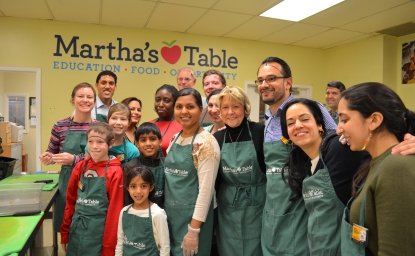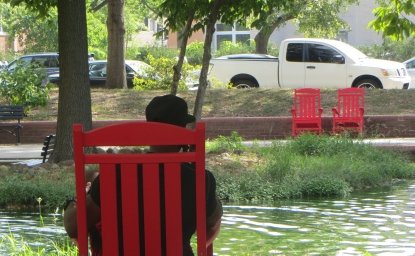The end – as Nomvuyo Ngcelwane would recall decades later in her memoirs Sala Kahle District Six: An African Woman’s Perspective – proved to be unremarkable. One early October day in 1963, an ungainly truck rumbled up to 22 Cross Street in Cape Town’s District Six, in the heart of one of the most diverse neighborhoods on the African continent. A team of brutish movers descended upon a modest but much-loved abode, climbed thirteen narrow steps to a second-floor flat, gathered up the Ngcelwane family’s earthly belongings, and quickly dispatched them miles away to the distant “black” township of Nyanga West. Mr. Ngcelwane was off at his job with the United Tobacco Company in Observatory at the time, so his wife and children took their new keys and went off to start an unwanted alien life.
The Ngcelwanes were members of a community that was being written out of history. They were Africans living in an historic part of Cape Town known as District Six. Because it was more often thought of as a “coloured” area, District Six stood as an affront to the racial dogmatists who had designed South Africa’s apartheid policies. The guardians of racial purity—empowered by the passage of the Group Areas Act in 1950—systematically set out to obliterate everything associated with the area so that its convenient real estate could become part of a freshly cleansed, white central city.
The Ngcelwanes—a working-class family of Xhosan cultural heritage from the amaBhele clan, adhering to the Protestant Christian Methodist faith that had come to town decades before—were forced to move from a neighborhood that had been home to a community of perhaps as many as 60,000 souls that included Afrikaner-speaking descendants of East African slaves, Afrikaner- and English-speaking former Dutch and British working-class colonists, Muslim merchants, shopkeepers whose ancestors had arrived in Cape Town as Dutch chattel, Jewish immigrants fleeing Russian pogroms at the beginning of the twentieth century, Christian missionaries and their flocks, and residents of every conceivable complexion. Individual and group identities formed around jobs, clan, ethnicity, language, religious belief, gender, and birth generation. The last pre-apartheid census in 1946 officially identified 28,377 District Six residents, including 20,184 “coloureds,” 1,096 “Asians,” 5,957 “Europeans,” and 840 “natives.” Holiday traditions were shared, distinct cuisines enriched one another, and a pulsating blend of musical cultures took shape.
Such a mélange of humanity could only offend those who preoccupied themselves with defining and enforcing concise racial, ethnic, religious, gender, and linguistic boundaries. When they had the power to do so, the proprietors of racial “purity” dispatched the Ngcelwanes and their neighbors to “scientifically” organized “monoracial” settlements remote from the city itself. Such official deportations—as opposed to less formalized, market- and custom-based segregation—first occurred in Cape Town with the removal of Africans from District Six in 1901 following a bubonic plague epidemic. Resettlement gained ferocious regularity once Afrikaner nationalists, led by Daniel François Malan’s National Party, gained control of the country’s Parliament in 1948.
District Six was hardly the only “mixed” South African urban neighborhood to disappear under the separation policies of the Nationalists’ apartheid regime. The newly empowered authorities likewise eradicated Johannesburg’s Sophiatown and Fordsburg, Port Elizabeth’s South End, East London’s North End, and other, smaller integrated areas. In fact, District Six managed to hold on a bit longer than some similar neighborhoods, thanks in part to the stubborn resistance of Cape Town’s City Council and other local leaders. Overall, between 1913 and 1983, at least 3.9 million people were forcibly removed from their homes in South Africa to enforce what the ideologues of state policy defined as “racial purity.”
District Six had been among the most diverse and vibrant of Cape Town’s in-town neighborhoods for decades, a creation of the days when the former Dutch provisioning station had become, in the eyes of the city’s Victorian and mid-twentieth-century boosters, a “tavern of the seas.” District residents provided basic services to their neighbors, labored on the docks, and worked in the warehouses and workshops that were a quick walk downhill in town.
Many residents of District Six were the descendants of slaves known locally as “Malays,” who had been brought by the Dutch in the seventeenth and eighteenth centuries from their South Asian colonies. Their Afrikaans speech, Arabic education, shared occupations, distinctive sartorial, culinary, and medical practices, music and festivals, and one- and two-storied flat-roofed whitewashed houses bespoke a cosmopolitanism that seemingly distinguished the area from anyplace else in the Cape Colony.
This neighborhood was precisely the sort of place that outsiders look upon with scorn. The area appeared to be in a constant state of decrepitude, because its poor residents and landlords lacked the capital needed to upgrade their residences. The district seemed to overflow with the sort of hucksters who feed off the poor, offering up an endless variety of entertainment to be enjoyed by sailors (and by those socially proper sorts who wanted to pursue their sporting life beyond the scrutiny of family, friends, colleagues, and coreligionists). Criminals were thought to lurk in various shadows, looking for easy prey.
Yet, District Six was always far more. Musicians fused Dutch wedding and folk songs, melodic revels sung at picnics (the ghommaliedjie), and lively comedic songs (the Afrikaans moppie) with American minstrel music as well as British brass band traditions. New Year’s carnival groups celebrating the Kaapse Klopse, -- held on Tweede Nuwe Jaar (January 2) —consistently attracted thousands of minstrels in bright garb, often carrying colorful umbrellas as they marched in blackface.
If Cape Town had become a bustling entrepôt on the central trade routes of the world’s largest, wealthiest, and most powerful empire, District Six was its déclassé roadhouse, close enough to the main road to be visited and far enough away from prying eyes to offer any good or service that the imagination of an entrepreneur and a customer might conjure. It was the space where the human diversity of the larger city intermingled, creating more than the “exotic” “local color” that so pleased colonial voyeurs. It was, in fact, a vibrant and rich community that nurtured bountiful cultural expression and a potent social intelligence, a place where residents were able to share their everyday experiences and to live not as “coloured,” “whites,” “Africans,” or “Indians” but as “Capetonians.”
District Six was just the sort of place, in just the sort of city, where new ideas burst forth—even if no one in authority cared to take note. Mrs. Ngcelwane and her neighbors and their descendants have praised their old home over and over again, whenever and wherever they have been given an opportunity to speak. This desire found the most vivid and touching expression at the District Six Museum, which opened in December 1994 in the former Central Methodist Mission on Buttenkanrt Street. Returning residents arriving at the museum lovingly mark their former homes on a giant street map of the old neighborhood painted on the museum’s floor.
About the same time that Apartheid’s ideologues moved to destroy District Six, another group of overseers took aim at a similar neighborhood a world away in Washington, D.C. In Washington, those in power feared that images of poor rural migrants from the South living in the shadow of the U.S. Capitol threatened to undermine Cold War visions of the good society. Rather than improve the lives of those enduring such conditions, Washington’s power brokers acted more simply to remove them from view. By 1950, plans were well under way to displace the city’s poorest residents. They began by obliterating the homes of rural African American migrants and the Jewish immigrant families who shared their lives in the city’s Southwest quadrant.
The Southwest slums were particularly unseemly and forlorn. The 113-block project zone south of the Mall and north of the Washington Channel (an inlet of the Potomac River) was home to 22,539 residents in 1950, nearly 80 percent of which were African American. Hundreds of buildings had no indoor plumbing, and many more were below the current building code. But even though the neighborhood was dilapidated, few residents wanted to leave. Social capital ran deep. Southwest D.C. was precisely the sort of down-at-the-heels urban village that can nurture poor migrants on their own terms.
In the end, the National Capital Planning Commission’s experiment destroyed 99 percent of the buildings within the project area. As a consequence, almost none of the original residents remained. Only a third of the area’s residents were able to secure alternative housing in public projects elsewhere in the city. Approximately 2,000 families moved into private rental units outside Southwest Washington; while others among the displaced remained completely lost from official records. A paltry 391 residents were able to purchase homes, virtually none in Southwest.
Washington’s Southwest Redevelopment Project—once proclaimed by the prominent architectural critic Wolf Von Eckardt as bringing “suburban wholesomeness with urban stimulation” to downtown—destroyed the social networks that held the city together. Unlike their South Africa counterparts, Washington’s planners paid little attention to where those losing their homes might end up. With few options at hand, the poor turned to relatively stable, white middle-class neighborhoods east of the Anacostia River, and to African American neighborhoods north of downtown, such as U Street. These massive disruptions combined with the lingering pathologies of segregation to push the city to the precipice of communal violence. The pent-up anger of thousands of displaced and powerless poor residents continued to build as Washington hurtled toward civic meltdown.
By 1952, the Washington Post’s publisher, Philip Graham, and his well-connected, wealthy white friends on the Federal City Council had pulled together a half-million-dollar plan to create a new city alongside the proposed freeway in Southwest. They enlisted the New York construction magnate William Zeckendorf and a young unknown architect, I. M. Pei, to create a new community of apartments, office buildings, and homes from which they would profit as investors. Only a few skeptical voices would rise above the public relations onslaught promoting the project, as when Eleanor Roosevelt inquired in 1959 about the fate of the people who had once lived in the area after visiting the project.
Resident reactions to the destruction of old Southwest Washington are suggestively reminiscent of those displaced by the destruction of Cape Town’s District Six. District Sixers reported that they felt at sea in a larger world, losing trust in others and a sense of safety in the world. They felt disappointment, anger, helplessness, and bitterness.
In Washington, a quarter of the expunged residents reported five years after their relocation that they had not made a single new friend in their new neighborhoods. Only 14 percent of these former Southwest residents felt as safe in their new homes as before. By contrast, in 1972, the replacement community had half as many residents, and nearly 80 percent were white. They inhabited 5,900 new housing units, of which only 310 were classified as being reserved for low- to moderate-income residents.
Bitter debates still rage over whether or not the Southwest Redevelopment Project “removed unspeakably poor housing, and built an attractive, racially integrated neighborhood” in its place or “destroyed a closely knit neighborhood and removed its institutions.” However lofty the planners’ goals, the project’s result are unequivocal as an upper middle class, biracial neighborhood replaced a densely organized, poor African American one.
A half-century later, Southwest is being more thoughtfully renewed again, with carefully planned in-fill projects and other urban interventions designed to draw fresh life to the area. Ironically, some of these initiatives will reconnect streets cut off by the earlier round of “regeneration.” In Cape Town, vacant fields left behind by the destruction of District Six cut a foul gash across one of the world’s most beautiful cityscapes. Meanwhile, the ideological wars that animated their annihilation ended long ago.







